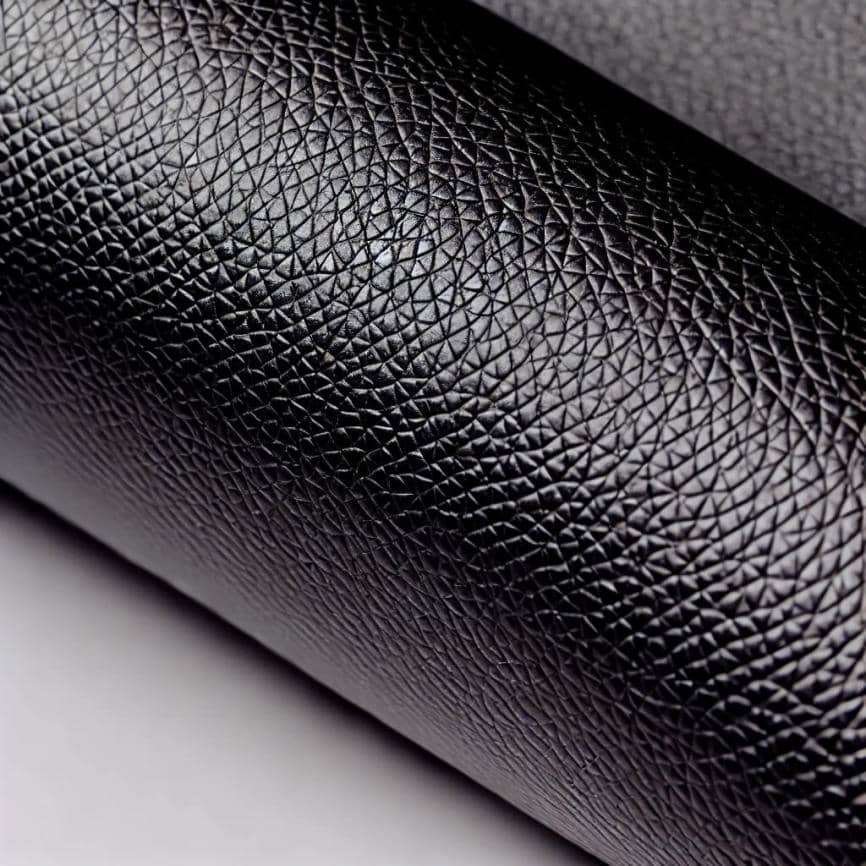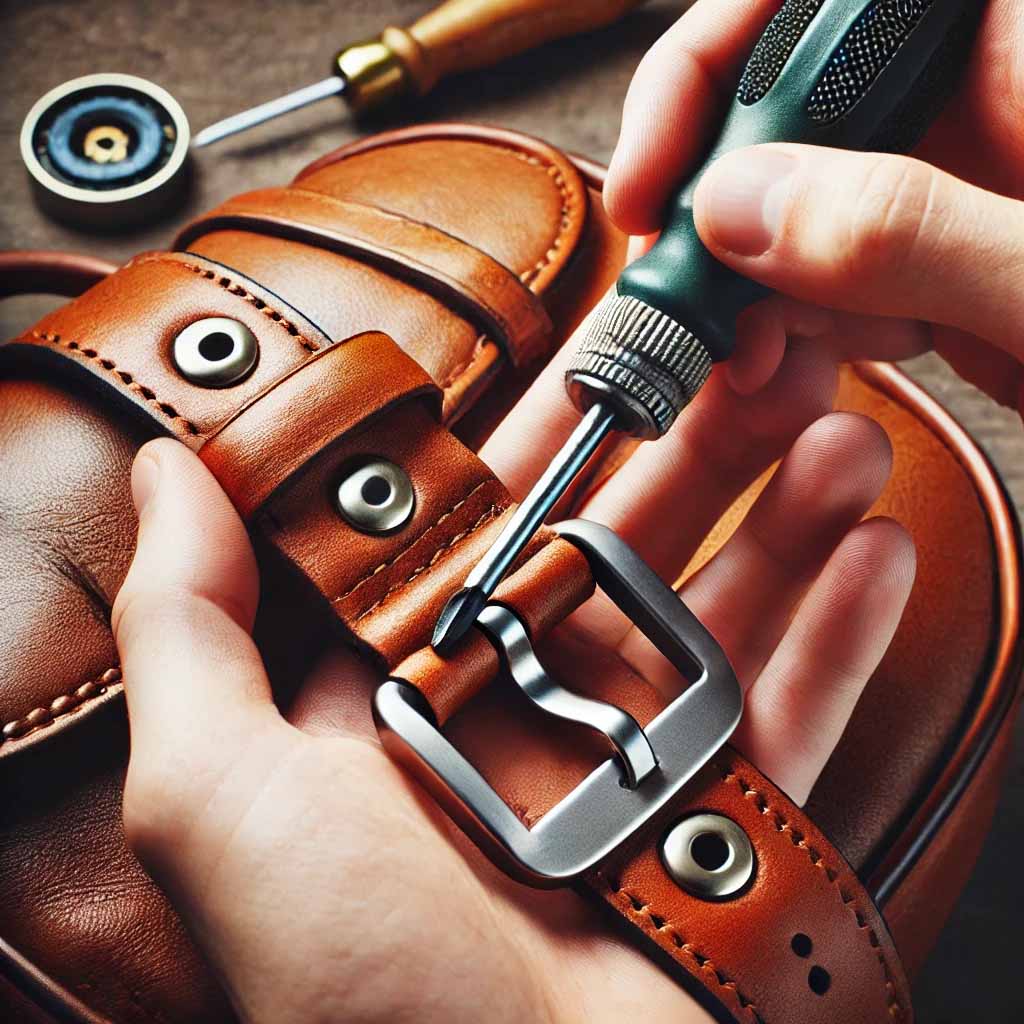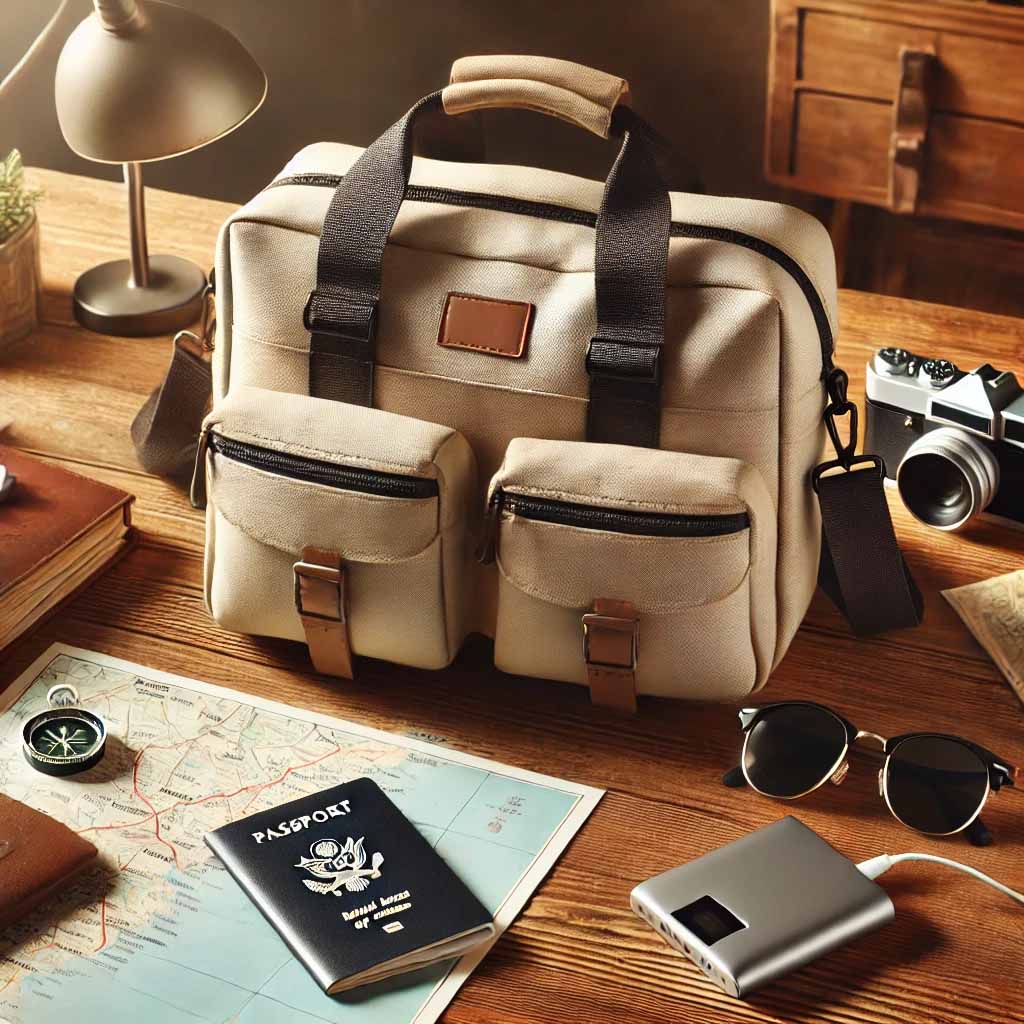HOME GUIDES VEGAN LEATHER: EVERYTHING YOU NEED TO KNOW
Vegan Leather: Everything You Need to Know
Written by Erin Sullivan
What is Vegan Leather?
Vegan leather, often referred to as vegetable leather or eco leather, is a cruelty-free alternative that excludes all animal-derived ingredients.
Typically crafted from plant fibers, renewable resources, or Faux materials, it is designed to mimic the appearance and texture of traditional animal leather.

As awareness around animal welfare and environmental sustainability continues to rise, vegan leather has increasingly emerged as a preferred choice in fashion.
Data from Grandviewresearch reveals that in 2020, the global vegan women's fashion market was valued at $336.9 billion, with projections to soar to $1,095.6 billion by 2027, marking a robust annual growth rate of 13.6%.

Image source: Grandviewresearch
This shift is driven by the growing number of brands and consumers gravitating towards vegan fashion, further accelerating the adoption of vegan leather.
Advantages and Disadvantages of Vegan Leather
Vegan leather has many advantages.
First, it aligns with the principles of ethical consumption, avoiding animal exploitation, which makes it popular among vegetarians and environmentalists.
Secondly, the production process of vegan leather is relatively eco-friendly, reducing the consumption of natural resources.
Its durability has also improved over time, with modern technology significantly enhancing its flexibility, breathability, and water resistance.
However, vegan leather also has its drawbacks.
Although it closely resembles genuine leather in texture and appearance, in some cases, its durability and comfort still fall short of high-quality animal leather.
Additionally, some vegan leather may show signs of aging and damage with long-term use, especially under extreme conditions, where it may not perform as well as genuine leather.
A study on the MDPI website compared the technical performance of genuine leather, Faux leather, and other alternative materials in different environments.
The results showed that while some alternative materials perform well in specific aspects, their overall performance still cannot match that of genuine leather.
This is because genuine leather has a unique multi-layer structure, with surface density and internal structural gradients that are difficult to replicate with Faux or bio-based materials.
Differences Between Vegan Leather, Real Leather, and Faux Leather
Vegan leather differs significantly from real leather and faux leather.
First, in terms of materials, genuine leather comes from animal skins, usually processed through complex tanning methods.
Vegan leather, on the other hand, completely avoids animal components and is mostly made from plant fibers, polyurethane (PU), or polyvinyl chloride (PVC).

Compared to genuine leather, the production process of vegan leather is more environmentally friendly and free from animal welfare concerns. Read more: Vegan Leather VS Real Leather.
Faux leather, is primarily made from plastic-based materials.
Although it is inexpensive and easy to maintain, it falls short of vegan leather in terms of environmental impact and breathability.
Vegan leather closely resembles the texture of real leather while offering environmental and ethical advantages, making it an ideal alternative between real and faux leather. Read more: Vegan Leather VS Faux Leather.
Origin and Development of Vegan Leather
The history of vegan leather dates back to the early 20th century when people began exploring eco-friendly alternatives to traditional leather.
In 1914, the U.S. Rubber Company invented Naugahyde at its Naugatuck plant in Connecticut, a synthetic leather based on rubber.
Naugahyde is considered one of the earliest rubber-based synthetic leathers and marked a significant milestone in the history of faux leather.
In the 21st century, with advancements in technology and growing environmental awareness, scientists started exploring more sustainable vegan leather materials.
For example, Piñatex is a vegan leather made from pineapple leaf fibers, utilizing agricultural waste and providing additional income for pineapple growers.
Developed by Ananas Anam, Piñatex is produced through an eco-friendly process that reduces the need for land, water, and chemical fertilizers.
This material closely resembles traditional leather in texture and appearance while offering sustainability and environmental benefits.
Vegan leather began gaining popularity in the mid-2010s. During this period, global attention to environmental and animal rights issues grew, leading more consumers to seek out and choose eco-friendly materials.
Global brands such as Stella McCartney, Gucci, and Adidas have launched their own vegan leather products, further driving the adoption of vegan leather in the fashion industry.
What is vegan leather made of
Vegan leather has sparked a green revolution in the fashion industry.
Common vegan leather materials are not only environmentally friendly but also offer excellent durability and aesthetic appeal.
These materials are typically made from synthetic fibers and plant-based components, serving as a substitute for traditional animal leather to meet consumer demands for animal rights and sustainability.
Vegan leather comes in various types, each with its unique properties and applications.
Polyurethane (PU) Leather
Polyurethane leather, commonly known as PU leather, is the most widely used type of vegan leather. It is highly favored for its superior softness and leather-like texture.
PU leather is created by coating a fabric base with polyurethane resin, retaining the durability of synthetic materials while offering the look and feel of genuine leather.
Additionally, different pigments and textures can be added during the production process of PU leather to meet diverse design needs.
Compared to genuine leather, PU leather is more environmentally friendly to produce. According to a study on leather life cycle assessment, the production of PU leather involves fewer harmful chemicals and excels in energy efficiency and emissions reduction.
Polyvinyl Chloride (PVC) Leather
Polyvinyl chloride leather, known as PVC leather, is renowned for its high abrasion resistance and ease of cleaning.

PVC leather is made by coating a fabric base with polyvinyl chloride resin, and it is widely used in automotive interiors, furniture, and protective equipment.
While the production of PVC leather involves some harmful substances, its low cost and high performance make it a significant player in the market.
Studies indicate that although PVC leather is less environmentally friendly than PU leather in certain aspects, its overall environmental impact is still lower than that of traditional genuine leather.
Genuine Leather Alternatives
In recent years, with growing environmental awareness, more and more alternatives to genuine leather have entered the market.
These alternatives use various plant-based materials and industrial waste, employing innovative processes to create vegan leather with high environmental value.
For example:
Mushroom leather, made from fungal mycelium, offers excellent flexibility and breathability;
Apple leather, produced by recycling apple processing waste using special techniques, is both eco-friendly and creative; Pineapple leather, made from pineapple leaf fibers, has a natural texture and unique feel.
These innovative materials showcase human ingenuity and creativity in the field of sustainable fashion, offering more possibilities for the future.
How Vegan Leather is Made
After learning about the materials used in vegan leather, you might be curious about how it's made.
Step 1: Collection and Preparation of Raw Materials
The first step in making vegan leather is collecting and preparing raw materials such as apple peels, mangoes, pineapple leaves, coconut shells, and cacti. Healthy, mature parts of the plants are selected, cleaned, and then cut and crushed for further processing.
Collection: Select suitable plant parts, like pineapple leaves and apple peels.
Cleaning: Remove surface impurities using mild cleaners.
Cutting and Crushing: Mechanical equipment cuts and crushes the plant material.
Step 2: Preliminary Processing and Extraction
The plant materials undergo mechanical and chemical treatment to extract fibers, forming the basic structure of vegan leather.
Mechanical Processing: Grind and press to separate fibers and juice.
Chemical Processing: Use natural adhesives and preservatives to enhance the bonding strength and preservation of fibers.
Drying: Remove excess moisture to keep the fibers soft and elastic.
Step 3: Mixing and Shaping of Materials
The processed plant fibers are mixed with other natural materials, pressed, and surface-treated to finally form vegan leather.
Material Mixing: Combine plant fibers with plant oils, natural resins, and other materials.
Pressing and Shaping: Use high-pressure equipment to press into sheets, determining the thickness and texture of vegan leather.
Surface Treatment: Processes like sanding, coating, and printing give vegan leather the texture and appearance of natural leather.
There’s a popular video on YouTube about making vegan leather from mangoes. Watching it will give you a more vivid understanding.
Applications of Vegan Leather
Fashion Industry
Vegan leather is rapidly rising in the fashion industry, becoming a favored material among designers of major brands. Its eco-friendly and cruelty-free nature makes it highly regarded in the sustainable fashion scene.
From handbags to purses, the texture and variety of vegan leather provide designers with endless creative possibilities.
For example, the renowned brand Stella McCartney has long adopted vegan leather products, showcasing a perfect blend of high-end fashion and environmental consciousness.
Moreover, the diverse colors and textures of vegan leather allow it to seamlessly integrate with various fashion elements, offering consumers a wider range of choices.
Clothing Industry
Vegan leather also displays its unique charm in the clothing industry.
Traditional leather garments are often favored for their luxury and durability, but vegan leather not only possesses these advantages but also wins consumers' favor for its breathability and lightness.
Vegan leather jackets and coats not only resemble genuine leather in appearance but are also easier to care for and less prone to moisture and mold.
Additionally, vegan leather is widely used in making fashion accessories such as belts and hats, meeting the dual demands of modern consumers for fashion and sustainability.
Footwear Manufacturing
The use of vegan leather in footwear manufacturing is also becoming increasingly common.
Compared to traditional leather shoes, vegan leather shoes are lighter, more breathable, and easier to clean, making them highly popular among consumers.
Sportswear brands like Adidas and Nike have begun launching vegan leather collections, emphasizing environmental protection and innovation.
For example, Adidas' "Futurecraft Loop" series uses vegan leather materials, highlighting the concepts of sustainability and recyclability.
Furthermore, high-end custom footwear brands are gradually embracing vegan leather, offering uniquely designed, high-quality products to meet the demands of the luxury market.
Furniture and Décor
Vegan leather is also showing great potential in the furniture and décor industry.
Its soft texture and variety of color options make it an ideal material for sofas, chairs, cushions, and other furniture.
Compared to traditional leather, vegan leather not only offers better environmental performance but also provides superior stain resistance and durability, making it suitable for various residential and commercial environments.
In recent years, more and more home brands have started introducing vegan leather furniture, emphasizing eco-friendly and healthy living concepts.
For example, IKEA's vegan leather sofas are not only stylish but also emphasize their non-toxic and harmless features, earning widespread praise.
Vegan Leather in Automotive Interiors
In automotive interiors, vegan leather is gradually becoming a standard feature in high-end models.
Its luxury and comfort are comparable to traditional leather, but it is more environmentally friendly and easier to maintain. High-end electric vehicle brands like Tesla have been early adopters of vegan leather interiors, showcasing the future trend in automotive interiors.
The application of vegan leather extends beyond seats to include steering wheels, dashboards, and other components, providing drivers with a comprehensive high-end experience.
How to Choose Vegan Leather Products
Identifying Vegan Leather
With a growing number of products claiming to be vegan leather, identifying genuine vegan leather has become a challenge.
Check the product label and certification marks. Authentic vegan leather is usually labeled as 'Vegan Leather' or 'PU Leather' and comes with environmental certification marks, such as PETA certification.
Texture and smell are also key indicators. Vegan leather typically has a soft, elastic texture with a smooth surface and no visible pores, whereas traditional leather has a fine pore structure. Additionally, vegan leather has little to no odor, while genuine leather often carries a distinct animal scent.
Visually, vegan leather can come in a wider variety of colors and textures, with various designs incorporated during the manufacturing process. In contrast, traditional leather tends to have more uniform, natural tones.
Touch and burn tests can further confirm authenticity. Vegan leather feels smooth and does not become sticky with prolonged contact. When burned, it emits a smell similar to burning plastic and melts, whereas genuine leather smells like burning hair and leaves grayish-white ash.
Things to Consider When Buying Vegan Leather Products
When purchasing vegan leather products, several key points should be considered to ensure you buy high-quality, truly eco-friendly items.
Choose reputable brands and sellers. Well-known brands tend to focus more on product quality and environmental standards, with their products typically undergoing rigorous testing and certification.
Carefully read product descriptions and ingredient lists. Vegan leather should include plant fibers, polyurethane, and other eco-friendly materials, with no animal components. For online shopping, checking customer reviews and ratings is also an important way to assess product quality.
Price is another factor to consider. High-quality vegan leather products are usually not cheap due to the complex manufacturing process and high cost of raw materials. If the price seems too low, it’s wise to question its authenticity and quality.
Pay attention to the brand's environmental commitments and social responsibility. Many brands detail their environmental initiatives and social responsibility on their websites or product descriptions, including the use of renewable energy and reduction of carbon emissions. Choosing such brands not only ensures your health but also contributes to environmental protection.
By following these methods and considerations, consumers can better choose high-quality vegan leather products, enjoying the benefits of eco-friendliness while meeting fashion and practical needs.
How to Care for Vegan Leather
Regular cleaning is key to maintaining vegan leather in good condition.

For dust and light stains, gently wipe with a damp cloth, avoiding excessive water.
For deep cleaning, first, use a soft brush to remove dust, then wipe with a specialized cleaner, and finish by drying with a clean cloth.
For stubborn stains, lightly rub with a small amount of white vinegar or lemon juice, but be careful not to apply too much force. Specialized stain removal products are also a good option.
While vegan leather is durable, it should be kept away from sharp objects to prevent scratches and wear.
To maintain its softness and shine, regularly apply conditioning oil or treatment, and buff with a dry cloth until smooth.
When storing, avoid direct sunlight and humid environments; it's best to keep it in a dry, cool place and wrap it in a dust bag.
FAQ
Q: What Exactly Is Vegan Leather?
Vegan leather is a synthetic material that contains no animal products.
Unlike traditional leather, vegan leather is made from plant fibers, polyurethane, or other bio-based materials. This eco-friendly material not only avoids harming animals but also reduces environmental pollution during production.
Vegan leather can match the texture and appearance of real leather and even has advantages in certain areas, such as water resistance and durability.
In recent years, as environmental awareness has grown, vegan leather has gained increasing recognition and use in the fashion industry.
Q: What Is the Best Vegan Leather?
The best vegan leather depends on its specific use and personal preference.
Common high-quality vegan leathers include Piñatex (pineapple leaf fiber leather), Mushroom Leather, and Apple Leather.
These materials offer excellent durability and softness, along with unique looks and textures.
For example, Piñatex has a rough texture with a natural feel, making it ideal for handbags and footwear.
Mushroom Leather is known for its soft, comfortable texture and biodegradability, making it an eco-friendly choice.
Apple Leather combines fashion and sustainability, with its smooth surface and vibrant colors making it a favorite among high-end fashion designers.
Q: What Is a Vegan Leather Handbag?
A vegan leather handbag is a fashion accessory made from vegan leather, containing no animal products.
These handbags meet both aesthetic and functional needs while adhering to environmental and ethical standards. Vegan leather handbags come in a wide range of styles, from simple totes to elegant crossbody bags.
Designers often leverage the versatility of vegan leather to create unique designs and textures, making each handbag distinctive.
Additionally, vegan leather handbags are relatively easy to care for, requiring less maintenance than genuine leather and offering high durability.
Q: How Long Does Vegan Leather Last?
The lifespan of vegan leather generally depends on the material and how it’s used. High-quality vegan leathers like Piñatex and Mushroom Leather can last for years with proper care.
In general, vegan leather is resistant to wear and tear, making it suitable for everyday use.
However, compared to genuine leather, vegan leather may be slightly less durable in extreme conditions.
For instance, frequent exposure to high temperatures or humidity may shorten its lifespan.
Therefore, proper care and correct usage are crucial to extending the life of vegan leather.
Q: What Are the Uses of Vegan Leather?
Vegan leather is highly versatile and not limited to handbags and footwear.
It is also widely used in clothing, furniture, and automotive interiors. In fashion, vegan leather is often used to make jackets, pants, and skirts that are both stylish and eco-friendly.
In home decor, vegan leather sofas and chairs are not only attractive but also easy to clean and maintain.
Moreover, an increasing number of automakers are using vegan leather for seats and interiors, meeting the demand for environmentally friendly materials.
Whether for everyday life or special occasions, vegan leather offers aesthetically pleasing and functional solutions.
Q: How Much Does Vegan Leather Cost?
The price of vegan leather varies depending on the material and brand.
Generally, high-quality vegan leather is slightly more expensive than standard synthetic leather but cheaper than top-grade genuine leather.
Products made from Piñatex and Mushroom Leather tend to be pricier due to their complex production processes and scarce resources.
However, with advancements in technology and increased production, the cost of vegan leather is becoming more reasonable, making it accessible to a wider range of consumers.
Choosing vegan leather is not just a fashion statement but also a reflection of environmentally conscious and ethical consumption.

.webp)













